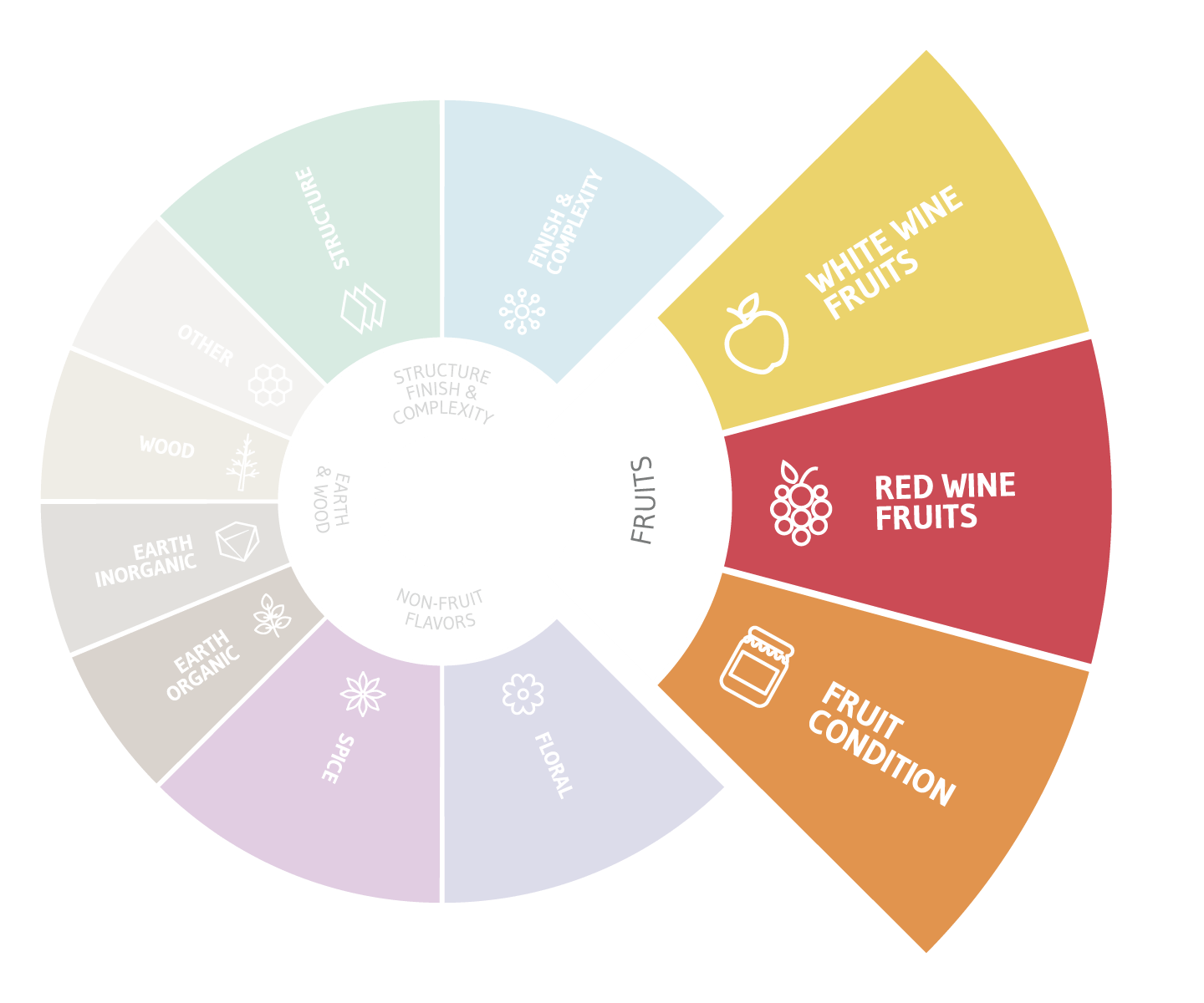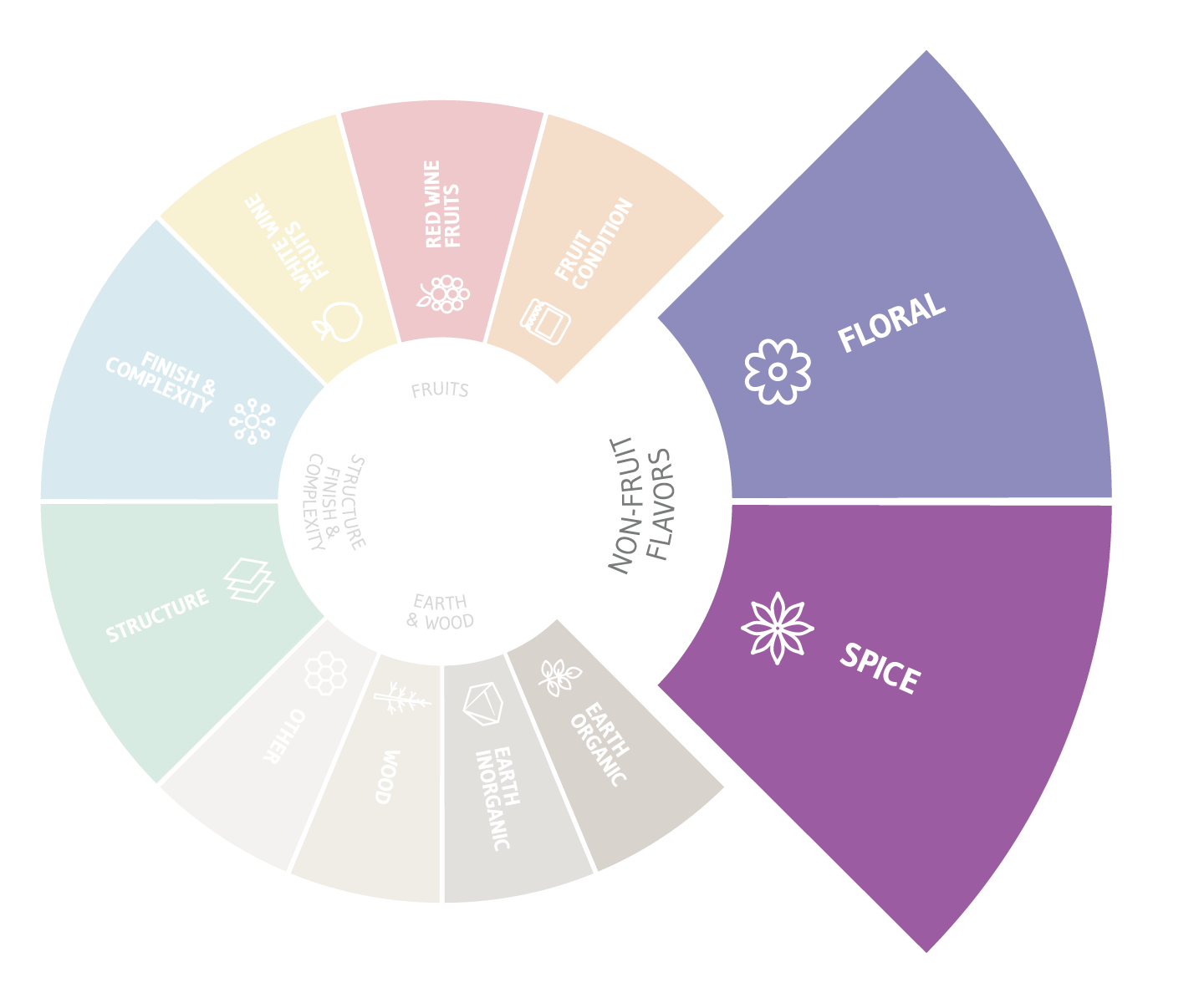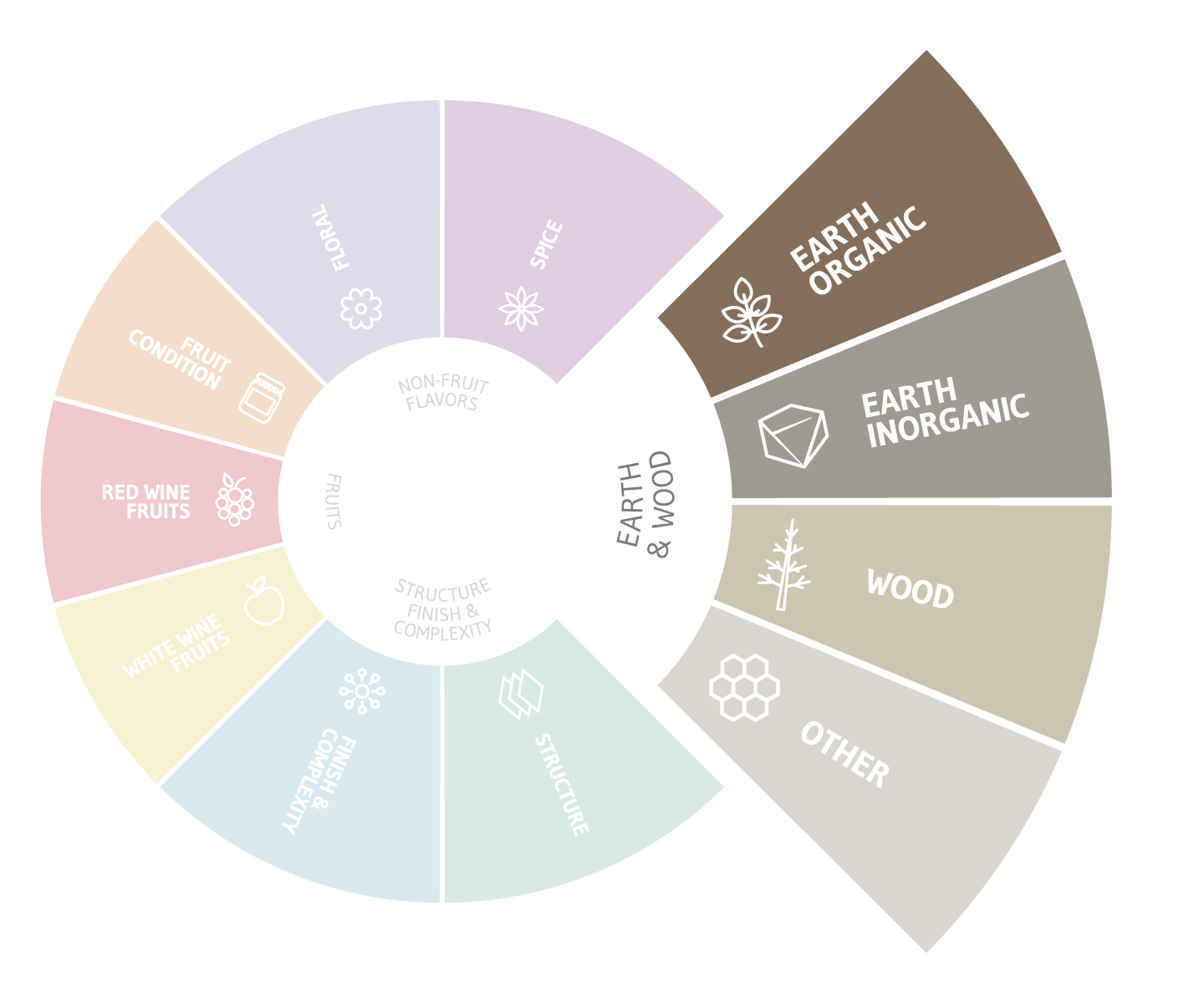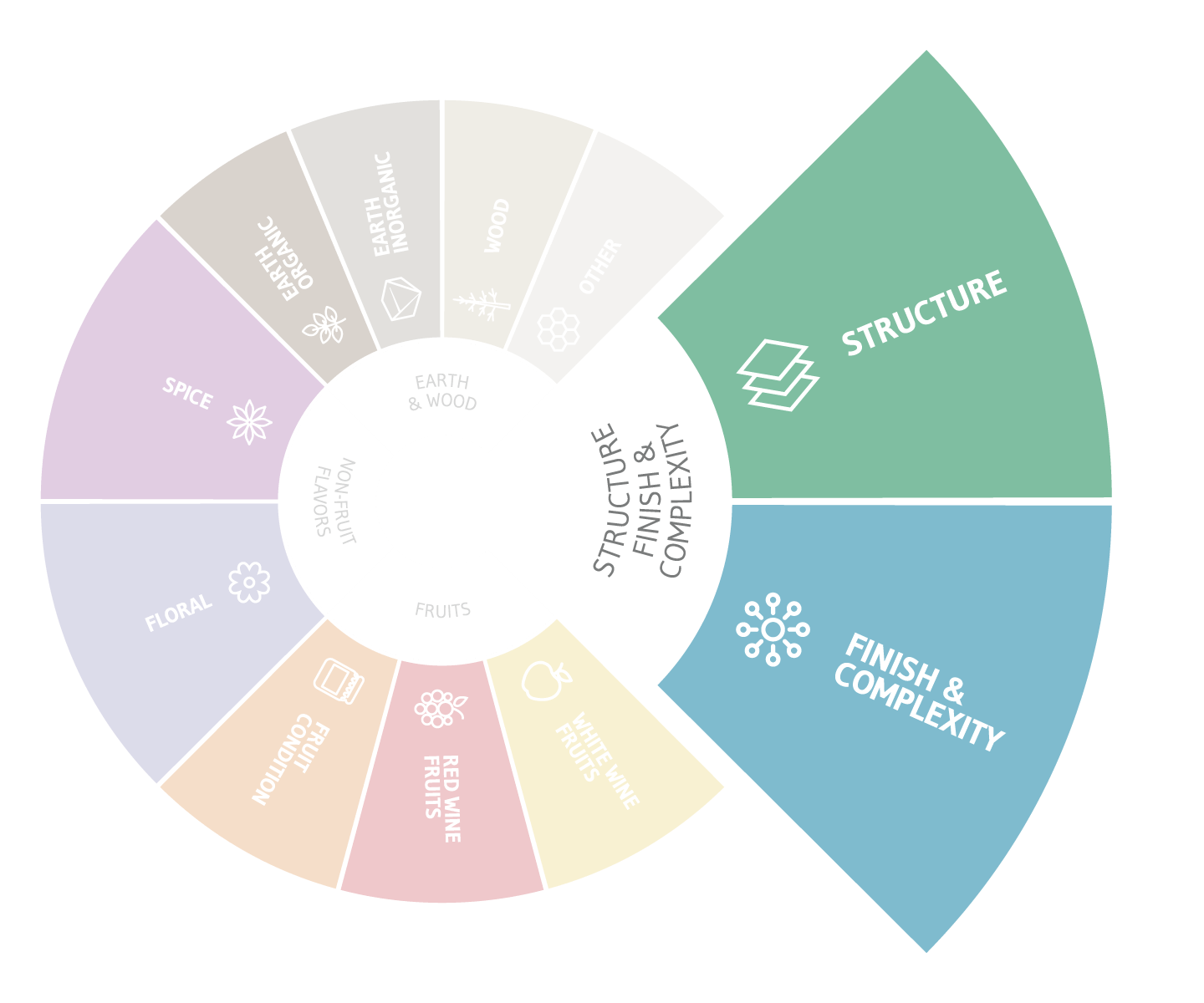One of the first things you notice as you take a sip of wine is where it hits your palate.
Continue reading about how you can taste and deduce elements of the wine structure
Learn More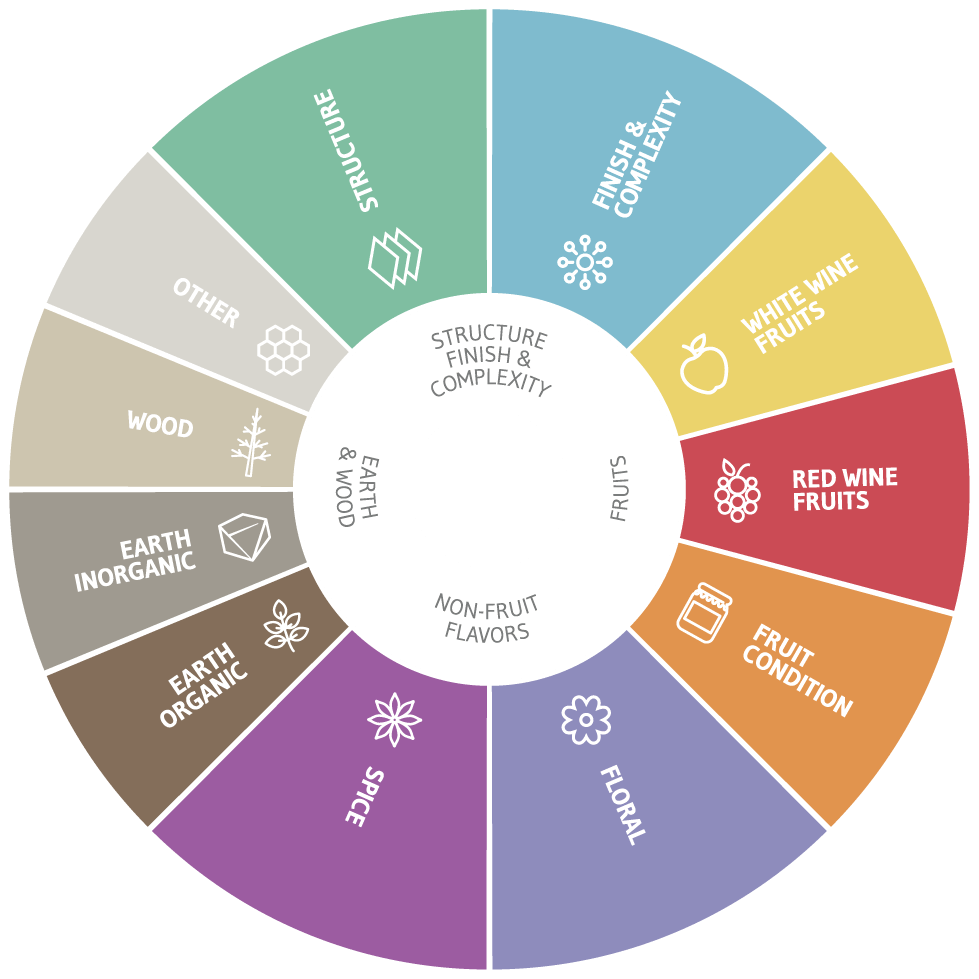
Once you've tasted the wine, organize the flavors that come forward. Use the same flavor construction as your aroma experience: red or white fruit and its condition, non-fruit flavors like floral or spice and, finally, earth and wood. Next, reflect on the structural elements we covered earlier and the finish of the wine.
